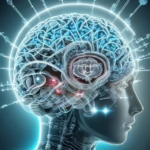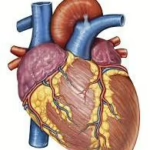The Science of Love: What Keeps Us Together?
Love is a complex and multifaceted emotion that has intrigued humanity for centuries. From poets to philosophers, many have attempted to capture its essence, yet the scientific community has just begun to unravel the biochemical and psychological threads that bind us together in romantic relationships. Understanding the science of love involves a blend of neurobiology, psychology, sociology, and evolutionary theory. This article delves into these aspects to explore what keeps us together in our intimate relationships.
The Biochemistry of Love
Hormones and Neurotransmitters
At the core of the experience of love lies a cocktail of hormones and neurotransmitters. The most notable substances include oxytocin, dopamine, and vasopressin.
-
Oxytocin: Often dubbed the "love hormone," oxytocin is crucial for bond formation. Released during physical touch, particularly during childbirth and breastfeeding, it enhances trust and strengthens relationships (Grewal, 2018). Studies show that couples who engage in physical affection, like hugging, have increased oxytocin levels, fostering a sense of closeness and intimacy (Carter, 2017).
-
Dopamine: This neurotransmitter is associated with the brain’s reward system. When we fall in love, our brain releases dopamine, creating feelings of pleasure and happiness. High levels of dopamine can lead to the intense happiness typically experienced during the initial stages of a romantic relationship (Aron et al., 2005). This euphoric feeling is often compared to the effects of certain drugs, illustrating how love can be addictive (Fisher et al., 2005).
- Vasopressin: This hormone is linked to behaviors that produce long-term, bonded relationships. It plays a key role in mating and parental behaviors in many species, including humans, supporting the idea that love serves to promote reproductive success and family stability (Hammock & Young, 2005).
The Brain in Love
Functional MRI (fMRI) studies have provided fascinating insights into how the brain behaves when we experience love. When individuals view images of their loved ones, specific brain regions become highly active, including the ventral tegmental area (VTA), which is rich in dopamine neurons. This area is crucial for motivation and reward, indicating that love triggers the brain’s reward circuitry (Aron et al., 2005).
Attachment Styles
Psychological theories, such as attachment theory, provide further insight into how love evolves and why some couples remain together while others drift apart. Attachment styles—secure, anxious, and avoidant—develop from early relationships with caregivers and significantly influence adult romantic relationships (Hazan & Shaver, 1987).
-
Secure Attachment: Individuals with secure attachment styles approach relationships positively, demonstrating trust and a healthy balance of independence and intimacy.
-
Anxious Attachment: Anxiously attached individuals often seek closeness but fear abandonment. Their relationships may be characterized by highs and lows, marked by intense emotional experiences.
- Avoidant Attachment: Those with avoidant attachment styles may struggle with intimacy and often maintain emotional distance. Such styles can lead to challenges in sustaining long-term relationships.
Understanding these attachment styles offers insight into interpersonal dynamics and can guide individuals in forming healthier relationships.
The Psychology of Love
The Stages of Love
Love typically evolves through various stages:
-
Attraction: Characterized by intense feelings of infatuation and desire, this phase is driven by biochemical changes in the brain and body. It can lead to the feeling of "love at first sight," where individuals experience overwhelming attraction.
-
Romantic Love: As relationships progress, they often transition into deeper emotional connections. At this stage, partners begin to share vulnerabilities and build trust, marking the shift from passion to a more intimate bond.
-
Companionate Love: This stage is characterized by deep affection, commitment, and mutual respect. Partners are more attuned to each other’s needs and engage in collaborative problem-solving.
- Enduring Love: Long-term relationships can enter a state of stable love, where partners navigate life together, often redefining their lives in tandem, balancing personal goals with shared aspirations.
Love Languages
The concept of love languages, introduced by Gary Chapman, suggests that individuals have unique ways of expressing and receiving love. The five love languages—words of affirmation, acts of service, receiving gifts, quality time, and physical touch—illustrate the diverse preferences people have in relationships (Chapman, 1992).
Understanding one’s love language, and that of their partner, can enhance communication and emotional intimacy. For instance, a partner who values acts of service may feel loved and appreciated when their significant other helps with daily tasks.
Conflict and Resolution
All couples experience disagreements, but how they navigate these conflicts is crucial for long-term relationship success. John Gottman’s research identifies key predictors of relationship stability, including:
-
The Four Horsemen: Criticism, contempt, defensiveness, and stonewalling are detrimental behaviors that can undermine relationships (Gottman, 1994).
- Positive Ratio: Successful couples maintain a 5:1 ratio of positive to negative interactions, suggesting that a healthy balance of affection, appreciation, and constructive communication can overcome challenging moments (Gottman, 1994).
The Evolutionary Perspective on Love
The Role of Love in Reproduction
From an evolutionary standpoint, love serves a critical function in human reproduction and survival. Romantic love promotes pair bonding, which increases the likelihood of raising offspring successfully. This concept aligns with the “mate selection” theory, which posits that individuals choose partners who offer genetic advantages (Buss, 1989).
The Impact of Social Environment
Love is not solely driven by individual biology; social context plays a significant role in how relationships form and sustain. Social pressures, cultural norms, and family expectations can shape partner choices and influence relationship dynamics. In many cultures, arranged marriages have been common, demonstrating that love can be cultivated over time (Buss, 1989).
Love and Cooperation
The drive to form loving relationships extends beyond romantic partnerships. Love and bonding occur in various social relationships, including friendships, familial bonds, and community ties. This cooperative behavior has evolutionary advantages, fostering alliances that enhance survival (Dunbar, 2010).
The Social Dynamics of Relationships
Cultural Influences
Cultural perceptions of love significantly impact how individuals express affection and commitment in relationships. In collectivist cultures, love may be viewed as a duty or responsibility, whereas, in individualistic cultures, it is often based on personal fulfillment and choice (Markus & Kitayama, 1991). These cultural differences influence relationship expectations, including conflict resolution and the importance of physical affection.
The Role of Technology
In recent years, technology has transformed how individuals meet and sustain love relationships. Online dating platforms have made it easier to connect with potential partners across geographical boundaries. While technology has expanded opportunities for finding love, it also poses challenges, such as superficial interactions and the pressure to present an idealized self (Toma, 2015).
Moreover, social media can impact relationships by fostering comparison and jealousy, requiring couples to navigate these challenges to maintain healthy connections (Dwyer et al., 2007).
Mental Health and Love
Mental health plays a crucial role in the dynamics of romantic relationships. Individuals with mental health challenges may face difficulties in establishing and maintaining healthy bonds. On the other hand, supportive partnerships can positively affect mental well-being (Reis & Shaver, 1988).
Building a solid foundation based on communication, empathy, and understanding can create a nurturing environment for both partners, allowing them to grow individually and collectively.
The Future of Love: Trends and Research
The landscape of romantic relationships is continuously evolving. Researchers are investigating how societal changes, such as shifting gender roles, economic factors, and psychological well-being, are reshaping how love is perceived and practiced.
Love in the Age of Connection
As society places increasing value on emotional intelligence, couples may prioritize understanding and communication to foster deeper connections. The growing focus on mental health awareness is likely to encourage individuals to seek therapy, enhancing relationship skills and understanding.
Non-Traditional Relationships
The rise of non-monogamous relationships, including open relationships and polyamory, highlights the diversity of love experiences today. These models challenge traditional definitions of commitment and intimacy, paving the way for alternative relationship structures (Grello et al., 2006).
Conclusion
Love is a profound force that shapes human behavior and experiences. By exploring its scientific, psychological, and sociocultural dimensions, we gain insight into the complexities of relationships and the biological foundations that keep us together. As our understanding of love continues to evolve, fostering effective communication, emotional intelligence, and mutual respect will remain essential for nurturing lasting connections in our rapidly changing world.
References
- Aron, A., Fisher, H., & Brown, L. L. (2005). "Mating and attachment." Psychological Inquiry.
- Buss, D. M. (1989). "Sex differences in human mate preferences." Journal of Personality and Social Psychology.
- Carter, C. S. (2017). "The role of oxytocin in social bonding and maternal behavior." Psychoneuroendocrinology.
- Chapman, G. (1992). The Five Love Languages: How to Express Heartfelt Commitment to Your Mate. Northfield Publishing.
- Dwyer, R., Leos, N., & Dyer, J. (2007). "The impact of online communication on interpersonal relationships." Journal of Computer-Mediated Communication.
- Dunbar, R. I. M. (2010). "How many friends does one person need? Dunbar’s number and other evolutionary quirks." Faber & Faber.
- Fisher, H. E., Aron, A., & Mashek, D. J. (2005). "The natural history of love." Scientific American.
- Gallo, L. C., & Matthews, K. A. (2003). "Psychosocial factors and the development of cardiovascular disease: A review." American Journal of Cardiology.
- Gottman, J. M. (1994). Why Marriages Succeed or Fail. Fireside.
- Grewal, N. (2018). "The role of oxytocin in human relationships." Hormones and Behavior.
- Hammock, E. A. D., & Young, L. J. (2005). "Enhancing pair bonding in a monogamous rodent." Nature.
- Hazan, C., & Shaver, P. (1987). "Romantic love conceptualized as an attachment process." Journal of Personality and Social Psychology.
- Markus, H. R., & Kitayama, S. (1991). "Culture and the self: Implications for cognition, emotion, and motivation." Psychological Review.
- Reis, H. T., & Shaver, P. (1988). "Intimacy as an interpersonal process." Handbook of Personal Relationships.
- Toma, C. L. (2015). "The impact of online profiles on relationships." Journal of Social and Clinical Psychology.
- Grello, C. M., Welsh, D. P., & Harper, M. (2006). "The role of non-monogamy in intimate relationships." Sexuality Research and Social Policy.
This serves as a comprehensive look into the scientific, psychological, and cultural dimensions of love. Each section builds upon empirical research to explain how love works and factors that influence its development and sustainability.


























Add Comment